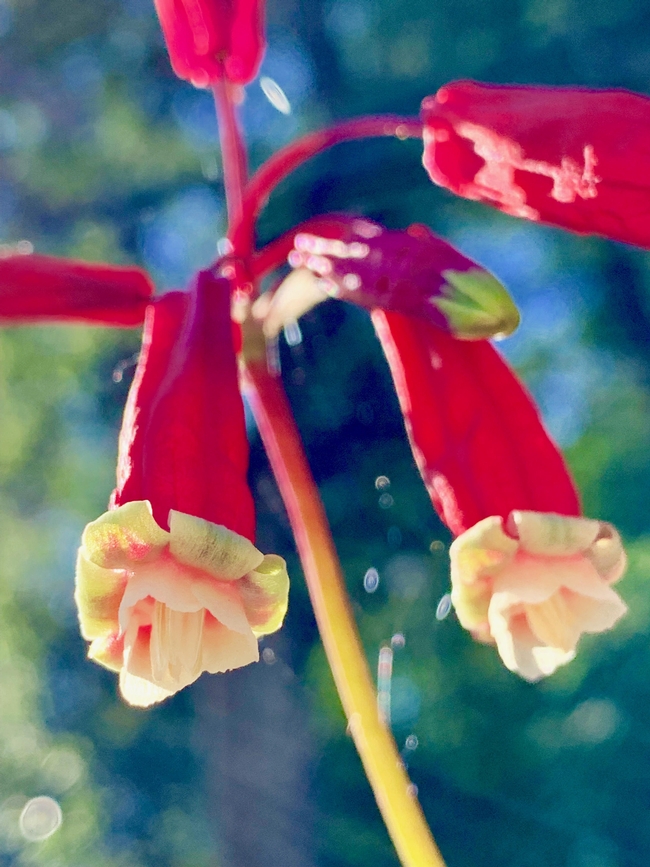
Firecracker brodiaeas (Dichelostemma ida-maia), also commonly referred to as firecracker flowers, are a showy California native plant whose loose clusters of tubular crimson flowers resemble firecrackers when in full bloom. If you enjoy keying out plants, here's what The Jepson Manual has to say about this plant. As one might expect, given the shape of their flower, firecracker brodiaeas attract hummingbirds in droves.
The genus name Dichelostemma, according the fascinating CalFlora database of California plant names, is "derived from two Greek words dicha, "bifid," and stemma, "a garland or crown," and thus meaning "a garland which is twice-parted to the middle," referring to the forked appendages on the stamens. The genus Dichelostemma was published by Karl Sigismund Kunth in 1843. (ref. genus Dichelostemma)." The species name ida-ma'ia "is named after Ida May Burke (1862-1871). From David Hollombe: "Ida May's father, Harrison ('Harry') Burk (or Burke) was a stage driver who in 1866, according to the story, showed the flowers to Alphonso Wood. (Soon after, he retired from stage driving and kept a hotel at French Gulch.) Ida May died at Shasta on Feb. 24, 1871. Calculating from the age given in the death notice in the Shasta Courier, she was born about October 15, 1862." The original author of the taxon, Alphonso Wood, apparently linked the ides of May as the flower's blooming time and the girl's name."
iNaturalist.org observations of firecracker brodiaea peak around late May and early June, but observant naturalists may be able to find them in July, as well, or successfully cultivate them in the garden to enjoy for years to come.